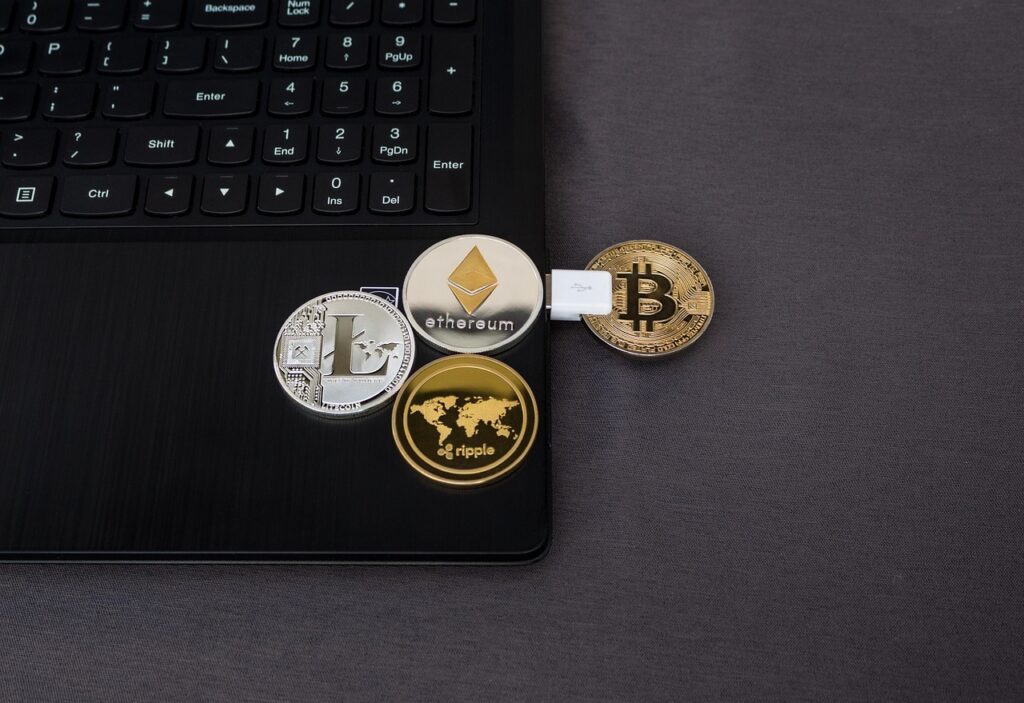Unlike traditional financial markets that have set opening and closing times, the crypto market is a whole different ballgame. It runs all day, every day, without stopping. This means people can buy and sell crypto whenever they want, no matter where they are in the world. But even though it’s always on, there are still times when more trading happens, and that’s usually when the market is most active. So, What Time Does the Crypto Market Open? The short answer is: they don’t close.
Table of Contents
- 1 What Are Crypto Market Trading Hours?
- 2 Why Crypto Markets Trade 24/7: The Decentralized Advantage
- 3 Understanding “Market Opens” and “Market Closes” in Crypto
- 4 The Continuous Nature of Crypto Trading
- 5 Defining “Open” and “Close” in a Crypto Context
- 6 Why This Matters for Traders
- 7 How Time Zones Affect Crypto Market Activity
- 8 Peak Trading Periods: When Is Crypto Most Active?
- 9 Weekend and Night Trading in Crypto Markets
- 10 Trading Volume and Liquidity
- 11 Volatility Considerations
- 12 Opportunities for Strategic Trading
- 13 Impact of Global Market Hours
- 14 Weekend vs. Weekday Trading: A Quick Comparison
- 15 Practical Tips for Weekend and Night Trading
- 16 Crypto vs. Traditional Markets: Comparing Trading Schedules
- 17 Why Volume Fluctuates Throughout the Day
- 18 Understanding Spread and Liquidity at Different Hours
- 19 Are There Any Crypto Exchange Downtimes or Maintenance Periods?
- 20 Scheduled Maintenance
- 21 Unscheduled Downtime and Security Breaches
- 22 Regulatory Compliance
- 23 Tools to Monitor Crypto Market Timing and Volume
- 24 Crypto Exchanges and Brokerage Platforms
- 25 Charting and Technical Analysis Tools
- 26 Volume Analysis Websites
- 27 Crypto News Aggregators and Social Media
- 28 Alert Systems and Bots
- 29 Frequently Asked Questions
- 30 What time does the crypto market open?
- 31 Is crypto trading 24/7 in India?
- 32 What is the best time to do crypto trading?
- 33 Why does it matter to trade during global market open hours when crypto is 24/7?
- 34 What time of day is crypto most traded?
- 35 When is the most volatile time for cryptocurrency?
- 36 Does the crypto market ever close?
- 37 How do market hours affect crypto trading?
What Are Crypto Market Trading Hours?
Unlike traditional stock markets, which have set opening and closing times, the crypto market operates around the clock, 24 hours a day, 7 days a week. This continuous availability is one of the defining characteristics of cryptocurrency trading. So, to answer the question of what time the crypto market opens, the answer is simple: it never closes.
This always-on nature stems from the decentralized structure of cryptocurrency exchanges. There’s no central authority dictating trading hours. Instead, trading occurs globally across numerous exchanges, each operating independently. This means that as one region goes to sleep, another wakes up and continues the trading activity.
The lack of fixed trading hours offers both advantages and disadvantages. On one hand, it provides flexibility for traders around the world to participate at any time. On the other hand, it can lead to increased volatility and require constant monitoring of the market.
Here are a few key points to remember about crypto market trading hours:
- 24/7 Operation: Crypto exchanges are open every minute of every day.
- Global Accessibility: Traders from any country can participate at any time.
- Decentralized Structure: No single entity controls the market’s hours.
While the market is always open, activity levels do fluctuate throughout the day. Understanding these fluctuations can help optimize your trading strategy. For example, the differences between cryptocurrencies and traditional stocks can impact trading decisions.
Why Crypto Markets Trade 24/7: The Decentralized Advantage
One of the most distinctive features of the cryptocurrency market is its continuous operation. Unlike traditional stock markets with set trading schedules, crypto never sleeps. This stems directly from its decentralized nature. There’s no central authority dictating when trading can and cannot occur. Instead, transactions are validated by a distributed network of computers, making it possible to trade at any time, day or night.
This always-on accessibility is a major draw for many investors, allowing them to react to market movements whenever they happen, regardless of their time zone or schedule.
This is a big deal. Think about it: you don’t have to wait for a specific time to buy or sell. If you want to buy Dogecoin at 3 AM, you can. This flexibility is a core advantage of the decentralized finance (DeFi) world.
Here’s why this decentralization matters:
- Global Accessibility: Anyone with an internet connection can participate, breaking down geographical barriers.
- No Intermediaries: Transactions occur directly between users, eliminating the need for banks or brokers.
- Constant Opportunity: Market events can be acted upon immediately, without waiting for the market to open.
The decentralized structure of blockchain technology is the key enabler of 24/7 crypto trading. Major exchanges like Coinbase and Binance operate around the clock, facilitating this constant activity. This means that whether you’re in New York, London, or Tokyo, you can always access the crypto market.
Understanding “Market Opens” and “Market Closes” in Crypto
It’s a bit of a mind-bender when you start thinking about “market opens” and “market closes” in the crypto world. Unlike traditional stock exchanges with their set hours, crypto operates on a completely different clock. So, what does it mean when we talk about these terms in the context of digital currencies?
The Continuous Nature of Crypto Trading
The crypto market, in its purest form, never really “opens” or “closes”. It’s always on, 24 hours a day, 7 days a week, 365 days a year. This is because it’s a decentralized global network, not tied to any single geographic location or exchange schedule. You can trade Bitcoin at 3 AM on a Sunday if you want to. This is a huge difference from traditional markets, where you have to wait for the opening bell.
Defining “Open” and “Close” in a Crypto Context
Even though the market is always running, we can still use the terms “open” and “close” in a few specific ways:
- Daily Timeframes: Traders often look at the price of a cryptocurrency at the start and end of a specific day (e.g., midnight UTC) to analyze daily performance. This helps in identifying trends and patterns, even though trading never stops. For example, you might see an analysis that says “Bitcoin opened at $30,000 and closed at $30,500 today.”
- Exchange-Specific Sessions: While the overall crypto market is always open, individual exchanges might have periods of higher or lower activity. Some traders might consider the start of their local business day as a kind of “open” for their personal trading strategy. Understandingcrypto market hours can help you gain a better sense of what factors can influence crypto assets’ prices.
- Contract Rollovers: For crypto futures and options, there are specific contract expiration dates and times. These can be seen as a kind of “close” for that particular contract, as traders must either close their positions or roll them over to the next contract period. Over $2.5 billion in Bitcoin and Ethereum options are set to expire, with $2.25 billion specifically in Bitcoin options.
Why This Matters for Traders
Understanding that the crypto market is always open is important for a few reasons:
- Flexibility: You can trade whenever it suits you, regardless of your time zone or schedule.
- Volatility: News and events can impact prices at any time, so you need to be prepared for potential volatility around the clock.
- Global Participation: The market is influenced by traders from all over the world, so you need to be aware of global events and trends.
It’s important to remember that while the crypto market is always “open”, liquidity and volatility can vary significantly throughout the day. This means that the best time to trade might depend on your specific strategy and risk tolerance. Pay attention to volume and price movements to identify the most favorable trading periods.
How Time Zones Affect Crypto Market Activity
The fact that the crypto market is always open means that time zones play a big role in when and how people trade. It’s not like the stock market where everyone’s waiting for the opening bell. Instead, activity shifts around the globe as different regions wake up and start trading. This creates interesting patterns in volume and volatility throughout the day.
Think about it: when the U.S. is asleep, Asia is wide awake and trading. Then, as Asia winds down, Europe comes online. This constant cycle keeps the market moving, but it also means that certain times of day can be more active or volatile depending on which regions are most engaged.
Understanding these time zone dynamics can give you an edge. Knowing when certain regions are most active can help you predict potential price swings and adjust your trading strategy accordingly.
For example, you might see increased volatility during the overlap between the U.S. and European trading sessions. Or, you might find that certain cryptocurrencies are more actively traded in specific regions due to local interest or regulations. Paying attention to these details can help you make more informed decisions.
Here’s a simple breakdown:
- Asian Session: Often sees high activity in altcoins and certain Asian-focused projects.
- European Session: Can be a major driver of Bitcoin and Ethereum trading.
- U.S. Session: Generally brings the highest overall volume and volatility.
It’s also worth noting that different exchanges are popular in different regions. For example, some exchanges might have a larger user base in Asia, while others are more popular in Europe or the U.S. This can also influence the types of cryptocurrencies that are most actively traded during certain times of day. Understanding the circulating supply is key to understanding the market.
Peak Trading Periods: When Is Crypto Most Active?
Indeed, crypto never sleeps, but that doesn’t mean activity is constant. There are times when the market buzzes with more energy, and understanding these peak periods can be a real advantage. Generally, the hours when major global markets overlap tend to see the highest trading volumes. This is when you’ll find the most action, and potentially, the best opportunities.
Think of it like this: when the U.S. and European markets are both open, you’ve got traders from both continents actively buying and selling. This increased participation leads to higher volume and, often, more price movement. It’s during these times that you’re more likely to see significant trends develop and have a better chance of getting your orders filled quickly.
It’s worth keeping an eye on specific times that align with major market openings. For example, the start of the U.S. trading day often brings a surge in activity. Similarly, when Asian markets come online, you might see another wave of trading. Staying aware of these patterns can help you time your trades more effectively.
Here are a few things to consider when thinking about peak trading times:
- Overlap is Key: Look for times when multiple major markets are open simultaneously.
- Volume Matters: Higher volume usually means more liquidity and tighter spreads.
- Volatility Can Increase: Be prepared for potentially larger price swings during peak hours.
For those in India, the prime crypto trading time often falls between 6:00 PM and 1:00 AM IST, which aligns with the European and U.S. sessions. This overlap creates a sweet spot for Indian traders looking to capitalize on global market activity. Understanding these patterns can help you make smarter decisions and potentially improve your trading results.
Weekend and Night Trading in Crypto Markets

Crypto never sleeps, and that includes weekends and nights. Unlike traditional markets with set hours, the crypto spot markets operate around the clock. This constant availability presents both opportunities and challenges for traders.
The crypto market’s 24/7 nature means you can trade whenever you want, but it also requires constant vigilance.
One thing to keep in mind is that trading volume and liquidity can fluctuate significantly during off-peak hours. Let’s explore what this means for you.
Trading Volume and Liquidity
During weekends and nights, trading volume tends to be lower compared to weekday trading hours. This reduced volume can lead to lower liquidity, which means it might be harder to execute large trades without affecting the price. Spreads, the difference between the buying and selling price, can also widen during these times. This is because there are fewer participants actively trading, so market makers may increase the spread to compensate for the increased risk.
Volatility Considerations
While lower volume can sometimes mean less price movement, it can also amplify volatility. Smaller trades can have a bigger impact on the price when there are fewer orders in the order book. This can lead to sudden price swings, especially for less liquid cryptocurrencies. Traders should be aware of this increased volatility and adjust their risk management strategies accordingly.
Opportunities for Strategic Trading
Despite the challenges, weekend and night trading can present unique opportunities. Some traders prefer these times because they can react to news and events without the competition of institutional traders who are typically active during weekday hours. Additionally, some strategies, like arbitrage, can be more profitable during periods of lower liquidity and wider spreads.
Trading during off-peak hours requires a different approach. It’s important to be patient, use limit orders, and be prepared for unexpected price movements. Don’t over-leverage your positions, and always have a clear exit strategy in place.
Impact of Global Market Hours
Even though crypto trades 24/7, global market hours still have an impact. For example, the overlap between US and European trading hours often sees increased activity in the crypto market. This is because more traders are online and active during these times. Similarly, the opening of Asian markets can also influence crypto prices. Understanding these global dynamics can help you time your trades more effectively.
Weekend vs. Weekday Trading: A Quick Comparison
| Feature | Weekday Trading | Weekend Trading |
| Trading Volume | Higher | Lower |
| Liquidity | Higher | Lower |
| Volatility | Generally Lower | Potentially Higher |
| Spread | Tighter | Wider |
| Market Influence | Influenced by institutional and retail traders | More influenced by retail traders and news events |
Practical Tips for Weekend and Night Trading
Here are a few tips to consider if you plan to trade crypto during weekends or nights:
- Use Limit Orders: Limit orders allow you to specify the price at which you want to buy or sell, helping you avoid slippage in less liquid markets.
- Monitor Order Books: Pay attention to the order books to gauge the depth of the market and identify potential support and resistance levels.
- Stay Informed: Keep up with the latest news and developments in the crypto space, as these can have a significant impact on prices, especially during off-peak hours.
- Adjust Position Sizes: Consider reducing your position sizes to account for the increased volatility and lower liquidity.
- Manage Risk: Always use stop-loss orders to limit your potential losses, and never risk more than you can afford to lose.
By understanding the unique characteristics of weekend and night trading, you can develop strategies to navigate these periods effectively and potentially capitalize on opportunities that arise.
Crypto vs. Traditional Markets: Comparing Trading Schedules
One of the most striking differences between cryptocurrency and traditional markets lies in their trading schedules. While traditional markets like the stock market or forex market operate within specific hours, the crypto market is open 24/7, 365 days a year. Let’s explore this contrast further.
The continuous operation of crypto markets offers flexibility but also requires constant vigilance.
Traditional markets have set opening and closing times, usually aligned with business hours in their respective locations. For example, the New York Stock Exchange (NYSE) operates from 9:30 AM to 4:00 PM EST on weekdays. Forex markets operate for 24 hours a day, five days a week, closing on weekends. This structured schedule provides periods of rest and allows for overnight risk management.
In contrast, the crypto market never sleeps. This is because cryptocurrencies operate on a decentralized network, meaning there’s no central authority to dictate trading hours. Transactions are validated by computers across the globe, ensuring continuous operation. This can be a huge advantage for those who want to trade outside of normal business hours.
The 24/7 nature of crypto markets can be both a blessing and a curse. While it offers unparalleled flexibility, it also means that traders need to be constantly aware of market movements, as significant price swings can occur at any time.
Here’s a quick comparison:
- Crypto Markets: 24/7, 365 days a year. Operates continuously due to its decentralized nature.
- Stock Markets: Limited hours, typically aligned with local business hours (e.g., 9:30 AM – 4:00 PM EST for NYSE).
- Forex Markets: 24 hours a day, five days a week. Closes on weekends.
This difference in trading schedules has significant implications for traders. Crypto traders need to be prepared for volatility at any time, while traditional market traders can focus their attention during specific hours. Understanding these differences is key to developing effective trading strategies.
Why Volume Fluctuates Throughout the Day
Crypto markets never sleep, but that doesn’t mean activity is constant. Volume, or the amount of cryptocurrency bought and sold, changes a lot during the day. Understanding these changes can be helpful for trading.
Trading volume often peaks when major markets overlap. For example, when both the U.S. and European markets are open, there’s usually more activity. This is simply because more traders are active at the same time.
Here’s a general idea of when different regions are most active:
- Asia (Tokyo, Singapore): 5:30 AM – 1:30 PM IST (Medium Activity)
- Europe (London, Frankfurt): 1:30 PM – 8:30 PM IST (High Activity)
- US (New York, Chicago): 8:30 PM – 3:30 AM IST (Very High Activity)
- Global (Low-volume): 3:30 AM – 5:30 AM IST (Low Activity)
Lower volume can lead to bigger price swings. During weekends and off-peak hours, prices can fluctuate more dramatically because individual buying and selling have more of an impact on price. It’s something to keep in mind.
Think of it like this: if only a few people are trading, a single large order can move the price a lot. But if many people are trading, that same order has less of an impact. This is why higher volume often means more price stability. It’s also why crypto market capitalization is important.
Other factors can also influence volume:
- News: Big news events can cause sudden spikes in trading volume.
- Social Media: What’s trending on social media can sometimes drive activity.
- Investor Sentiment: General feelings about the market can affect how much people trade. You can buy Dogecoin at any time, but the volume will vary.
Understanding Spread and Liquidity at Different Hours
Crypto markets are indeed open 24/7, but that doesn’t mean conditions are the same all the time. The spread (the difference between the buy and sell price) and liquidity (how easily you can buy or sell an asset without affecting its price) can change a lot depending on the time of day.
Liquidity tends to be highest when major markets overlap, leading to tighter spreads and easier order execution.
Think of it like this: when more people are actively trading, there are more orders on both sides (buy and sell). This creates a more competitive environment, which usually means smaller spreads and less slippage.
Trading when liquidity is low can be risky. You might end up paying a higher spread or not being able to fill your order at the price you want. It’s something to keep in mind, especially if you’re trading larger amounts.
Here’s a general idea of how activity levels shift throughout the day (times are approximate):
- 5:30 AM – 1:30 PM IST: Asia (Tokyo, Singapore) – Medium Activity
- 1:30 PM – 8:30 PM IST: Europe (London, Frankfurt) – High Activity
- 8:30 PM – 3:30 AM IST: US (New York, Chicago) – Very High Activity
- 3:30 AM – 5:30 AM IST: Low-volume Global – Low Activity
So, what does this mean for you? Well, if you’re trading from India, the late evening hours, when the European and US markets overlap, could be a good time to trade for optimal execution. Understanding market depth is key to making informed decisions.
Here are some things to consider:
- Spreads: Check the spread before you trade. It can widen significantly during off-peak hours.
- Order Size: Be mindful of your order size. Large orders can be harder to fill when liquidity is low.
- Volatility: Low liquidity can lead to bigger price swings. Be prepared for increased volatility during these times.
Are There Any Crypto Exchange Downtimes or Maintenance Periods?
While the crypto market operates 24/7, it’s not immune to occasional interruptions. Crypto exchanges, like any other online platform, sometimes require downtime for maintenance, upgrades, or to address security concerns. These downtimes can be frustrating, but they’re often necessary to ensure the long-term stability and security of the platform. Let’s explore some reasons why these downtimes occur.
It’s important to remember that even if one exchange is down, the global crypto market continues to operate, as other exchanges remain open for trading.
Scheduled maintenance is a common reason for exchange downtimes. Exchanges need to update their software, improve their infrastructure, and perform routine checks. These activities often require taking the platform offline temporarily. While exchanges usually announce these downtimes in advance, they can still disrupt trading strategies.
Scheduled Maintenance
Exchanges regularly schedule maintenance to improve their systems. This might involve updating software, upgrading hardware, or performing database maintenance. These updates are crucial for enhancing performance, fixing bugs, and implementing new features. Scheduled maintenance is usually announced in advance, giving users time to prepare. However, the exact duration can sometimes be unpredictable. For example, an exchange might announce a two-hour maintenance window, but the actual downtime could be longer if unexpected issues arise. Always check the exchange’s official communication channels for updates.
Unscheduled Downtime and Security Breaches
Sometimes, downtimes are unplanned. These can be caused by technical glitches, server issues, or, more seriously, security breaches. A security breach can force an exchange to suspend trading immediately to secure user funds and investigate the incident. Unscheduled downtimes are particularly disruptive because they happen without warning. In such cases, it’s vital to stay informed through official exchange announcements and news outlets. Consider diversifying your holdings across multiple exchanges to mitigate the impact of potential downtime on any single platform. Always prioritize security measures like two-factor authentication to protect your account.
Regulatory Compliance
Changes in regulatory compliance can also lead to temporary shutdowns. Exchanges might need to halt operations to implement new compliance measures or address regulatory concerns. This is more common in regions with evolving crypto regulations. For example, an exchange might need to temporarily suspend trading for certain assets while it obtains the necessary licenses or adapts to new legal requirements. These downtimes are usually announced, but the exact duration can be uncertain, depending on the complexity of the regulatory changes.
Here’s a quick list of things to keep in mind:
- Check Announcements: Always monitor the exchange’s official website, social media, and email communications for announcements about scheduled or unscheduled downtimes.
- Plan Ahead: If you know about scheduled maintenance, adjust your trading strategy accordingly. Avoid placing critical trades right before or during the downtime.
- Diversify Exchanges: Consider using multiple exchanges to reduce the risk of being locked out of the market during downtime on one platform.
Tools to Monitor Crypto Market Timing and Volume
Keeping tabs on the crypto market’s pulse requires the right tools. Since it operates around the clock, understanding when activity spikes and dips is key to making informed decisions. Luckily, there are several resources available to help you monitor market timing and volume effectively.
Crypto Exchanges and Brokerage Platforms
Most crypto exchanges, such as Coinbase and Binance, provide real-time data on trading volume, price charts, and order books. These platforms are your first stop for monitoring market activity. Brokerages like Robinhood also offer similar tools, though their crypto selection might be more limited. Choosing a reliable exchange ensures you have access to accurate and timely data.
Charting and Technical Analysis Tools
For more in-depth analysis, consider using charting platforms like TradingView or Coinigy. These tools offer a wide range of technical indicators, such as moving averages, RSI, and MACD, which can help you identify trends and potential trading opportunities. You can also set up custom alerts to notify you of significant price movements or volume spikes.
Volume Analysis Websites
Websites like CoinMarketCap and CoinGecko provide aggregated data on trading volume across various exchanges. These sites can help you identify which cryptocurrencies are experiencing the most activity and which exchanges are driving that volume. This information can be useful for spotting potential pumps and dumps or for finding liquid markets to trade in. Understanding crypto volume analysis is crucial for making informed trading decisions.
Crypto News Aggregators and Social Media
Keep an eye on crypto news aggregators like CryptoPanic or CoinTelegraph to stay informed about market-moving events. Social media platforms like Twitter and Reddit can also provide valuable insights into market sentiment and potential trends. However, be cautious when relying on social media, as it can be easily manipulated.
Monitoring the crypto market timing and volume is an ongoing process. It requires a combination of technical analysis, fundamental research, and a healthy dose of skepticism. By using the right tools and staying informed, you can improve your chances of success in the crypto market.
Alert Systems and Bots
Consider using alert systems or trading bots that can automatically monitor the market for specific conditions. These tools can be programmed to send you notifications when certain volume thresholds are reached or when prices hit specific levels. This can be especially useful if you’re unable to monitor the market constantly.
Here’s a simple table illustrating peak trading times based on geographical region:
| Time (IST) | Region | Market Influence | Activity Level |
| 5:30 AM – 1:30 PM | Asia (Tokyo, Singapore) | Technical and early movers | Medium |
| 1:30 PM – 8:30 PM | Europe (London, Frankfurt) | High liquidity opens | High |
| 8:30 PM – 3:30 AM | US (New York, Chicago) | Peak volume window | Very High |
| 3:30 AM – 5:30 AM | Low-volume Global | Overlap cooldown | Low |
Strategy Tips: How to Trade Based on Crypto Market Hours
It’s true, the crypto market never sleeps. But that doesn’t mean all hours are created equal when it comes to trading. Understanding when the market is most active can seriously improve your trading game. Let’s look at some strategies to use based on the time of day.
Timing your trades with market activity can be a game-changer.
Think of it like this: trading when everyone else is trading means more liquidity and potentially better prices. Trading when no one is around? You might get stuck with wider spreads and slower fills.
Here’s how to make the most of it:
- Identify Peak Hours: Pay attention to when the most trading volume occurs. Usually, this is when the U.S. and European markets overlap. For example, data suggests that cryptocurrency trading is most intense between 10 AM and 11 AM EST.
- Adjust for Volatility: Be aware that volatility can spike during peak hours. If you’re risk-averse, you might want to trade during less volatile times. Conversely, if you’re looking for quick profits, peak hours might be your thing.
- Consider Time Zones: If you’re in India, the prime crypto trading time is between 6:00 PM and 1:00 AM IST, which overlaps with European and U.S. sessions. Tailor your trading schedule to these active periods.
Here’s a simple table to illustrate how different trading sessions can affect your strategy:
| Session | Time (EST) | Characteristics | Strategy |
| Asian Session | 7 PM – 4 AM | Lower volatility, lower liquidity | Scalping, range trading |
| European Session | 3 AM – 12 PM | Increasing volatility, moderate liquidity | Breakout trading, trend following |
| US Session | 8 AM – 5 PM | Highest volatility, highest liquidity | Day trading, swing trading |
| Overlap (US/EU) | 8 AM – 12 PM | Very high volatility, very high liquidity | Short-term trades, high-frequency trading |
| Overlap cooldown | 5 PM – 7 PM | Low volatility, decreasing liquidity | Position closing, risk management |
By understanding these patterns, you can make smarter trading decisions and potentially increase your profits.
Frequently Asked Questions
What time does the crypto market open?
The cryptocurrency market is always open. Unlike regular stock markets, it never truly closes. You can trade digital currencies any time of day, any day of the week.
Is crypto trading 24/7 in India?
Yes, you can trade crypto 24/7 in India, just like in most other parts of the world. All the main trading platforms allow this.
What is the best time to do crypto trading?
The best time to trade crypto is usually between 6:00 PM and 1:00 AM Indian Standard Time (IST). This is when both European and U.S. markets are active, which means more people are trading, leading to bigger price changes and easier buying and selling.
Why does it matter to trade during global market open hours when crypto is 24/7?
Even though crypto markets are always open, the busiest times are usually when major financial markets in the U.S. and Europe are open. This is because many traditional investors also trade crypto during these hours.
What time of day is crypto most traded?
Data suggests that crypto trading is most active around 3-4 PM Coordinated Universal Time (UTC), which is 10-11 AM Eastern Standard Time (EST). This period sees the most trades happening on big exchanges.
When is the most volatile time for cryptocurrency?
The crypto market is most likely to have big price swings on Wednesdays around 4 PM UTC. This is often when the U.S. market is very active, causing more movement in crypto prices.
Does the crypto market ever close?
No, the main crypto market never closes. It runs all the time. However, some specific trading products, like crypto CFDs (Contracts for Difference), might have set hours, and exchanges can temporarily stop trading for maintenance or if there’s a big problem.
How do market hours affect crypto trading?
The crypto market is always on, but at certain times, it has more activity. For example, when both European and U.S. traders are online, there’s more buying and selling. This can make prices change more quickly and make it easier to complete trades.














